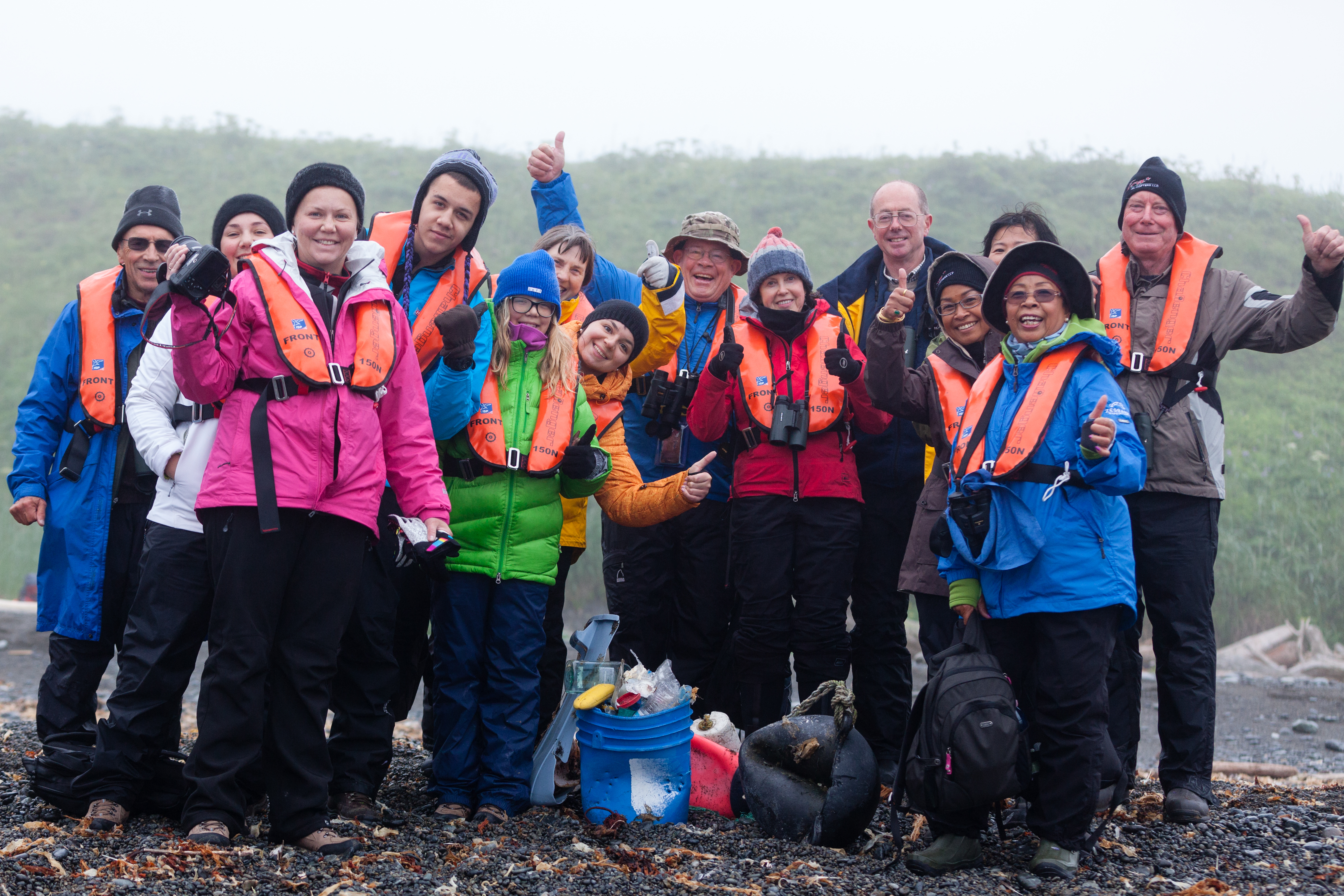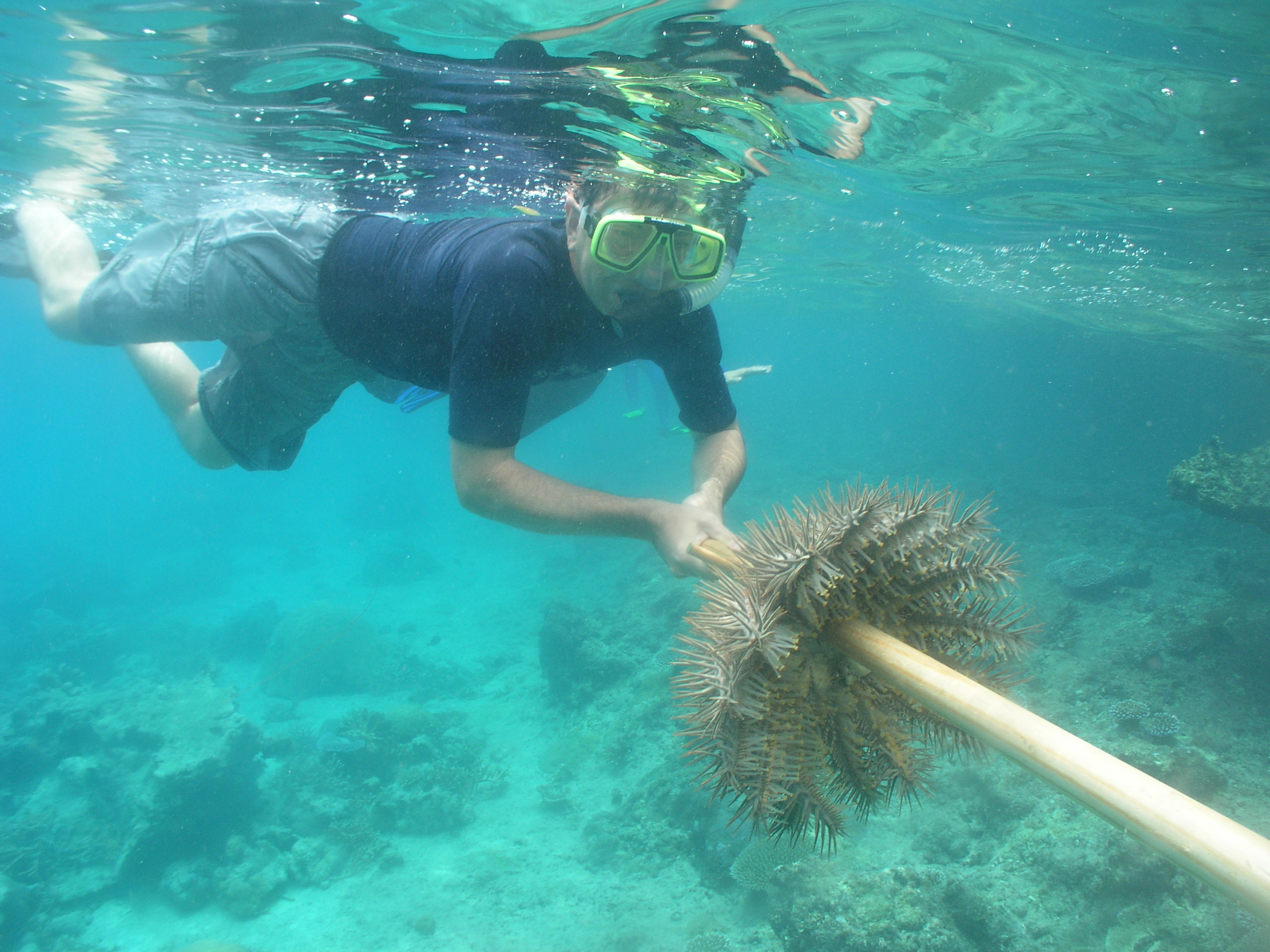On Earth Day, we want to celebrate the admirable efforts of our travelers, who have demonstrated in really special ways that they are committed to protecting the environment. These folks share a common message: that they were inspired to protect wild animals and wild places precisely because they had a chance to visit them.
A Hike with a Purpose
A thick fog hung over an uninhabited island on Alaska’s Aleutian Peninsula as travelers disembarked a fleet of Zodiac landing crafts. The weather kept energy levels low, and the trash littering the shoreline was a disappointing sight.
Though the island was supposed to be part of a protected reserve, the trash had migrated to there from parts of eastern Asia. WWF program officer Elisabeth Kruger, who was accompanying the travelers, noticed some trash with Japanese writing on it. She speculated that it may have been flotsam from the aftermath of the tsunami that hit Japan’s coast in 2011.
Noticing some of the travelers’ low spirits, a guide playfully suggested, “If you want to get back on a Zodiac, you have to bring a piece of trash with you.” Suddenly, members of the group perked up. A challenge! The travelers chattered with delight and embraced the task with zeal, spending the next hour collecting shredding bags, chunks of plastic and other pieces of refuse that survived weeks at sea.
Some of the travelers commented later that the morning on the island presented a powerful message: That what happens close to home can affect places hundreds or even thousands of miles away.
Ridding a Reef of Invasive Species
In the late 1990s, marine biologist and WWF snorkeling guide Ron Leidich started to notice an unpleasant sight on the usually pristine reefs surrounding the island nation of Palau. Invasive crown-of-thorns starfish had moved in, chomping on the coral gardens that had flourished for hundreds of years.
Proving that the tools of conservation need not be fancy, Leidich built a rustic tool that he’d use to remove them—a sharpened broomstick with a dowel handle. While guiding snorkeling tours, he and his team would demonstrate for travelers how they’d spear the crown-of-thorns starfish, collecting them in a bucket until they withered.
The travelers, however, were not satisfied merely watching. They, too, wanted to help. So Leidich prepped extra spears, and today, travelers often help with the efforts to rid the reefs of this invasive species. He takes them to the reefs that need the most protection.
“Like firefighters protecting the city’s cathedrals, museums and capitals,” Leidich explained, “we chose to remove the starfish from the oldest and most diverse gardens in Palau.”
Filling the Kitty to Protect a Big Cat

Expedition leader Olaf Malver going over the day’s plans with the intrepid travelers. Photo © Eric Rock/Natural Habitat Adventures
The global population of elusive, mountain-dwelling snow leopards is suspected to have plummeted to fewer than 2,500 individuals. Nearly half of the ones that do remain likely live in the highest mountains of Mongolia.
Twelve travelers journeyed to Mongolia on a WWF-Natural Habitat Adventures expedition last summer to go in search of the elusive big cat. They knew the chances of seeing one was slim (and in fact they didn’t get to catch a glimpse during the 14-day expedition). But what they did experience inspired them to get more involved in efforts to protect snow leopards from extinction.
Trekking alongside WWF researchers on steep mountain trails, the travelers learned about how the local community – everyone from nomadic herders to scientists – are working to protect snow leopards. Enmeshed in the stunning environment, the travelers quickly became impassioned by the community’s efforts—so much so that after they came home, they collectively decided to donate money to WWF to support efforts to protect the snow leopard.
The group gave $8,000, and Natural Habitat Adventures, WWF’s tour operator, matched the funds.
“It was a true experience that delivered us back to our regular lives changed for the better,” participant Jennifer Craig said after the expedition. Fellow traveler Bob Parker concurred, calling the adventure and the opportunity to help conservation “a chance of a lifetime.”
Saving a Baby Manatee
The young manatee squirmed as two park rangers in the Peruvian Amazon recorded its weight and length. Just a day before, the rangers had rescued the just-weaned baby from the hands of poachers, who illegally caught the manatee in the Pacaya-Simiria National Reserve and likely were planning to sell it at a food market.
A group of travelers, who just happened to arrive at the ranger station that morning, had the rare privilege of aiding the rangers in keeping the manatee comfortable by pouring water on it. They then helped release it back into the river.
Writer Bret Love, a traveler on the WWF expedition, noted the compassion the experience provoked, “not just for the plight of manatees around the world, but also for that of people living in such abject poverty that they have to eat whatever they can find in order to survive.”
A Wildly Successful Yard Sale
If only all yard sales were this profitable.
After seeing polar bears in their natural habitat for the first time, a 13-year-old boy from Ridgewood, N.J., was determined to make his weekend yard sale a resounding success. Inspired by the bears, he planned to donated all earnings to conservation.
And a success it was—Isaac Peabody brought in $3,000, which he donated to WWF.
He had traveled to Churchill, Manitoba, with his grandmother Pamela Lodish and two cousins to observe polar bears on the Hudson Bay. “We hoped the kids would learn about global warming while on the trip,” said Pamela, of Brookline, Mass.
The effect of climate change on polar bear is substantial. As the sea ice takes longer to form each year, polar bears are spending more time onshore, coming into contact with Arctic communities frequently, creating conflict that organizations such as WWF are trying to reduce.
“Travel makes you aware of the world around you,” Pam said. “We hope our grandchildren take away this lesson and use this experience to help others.”






































